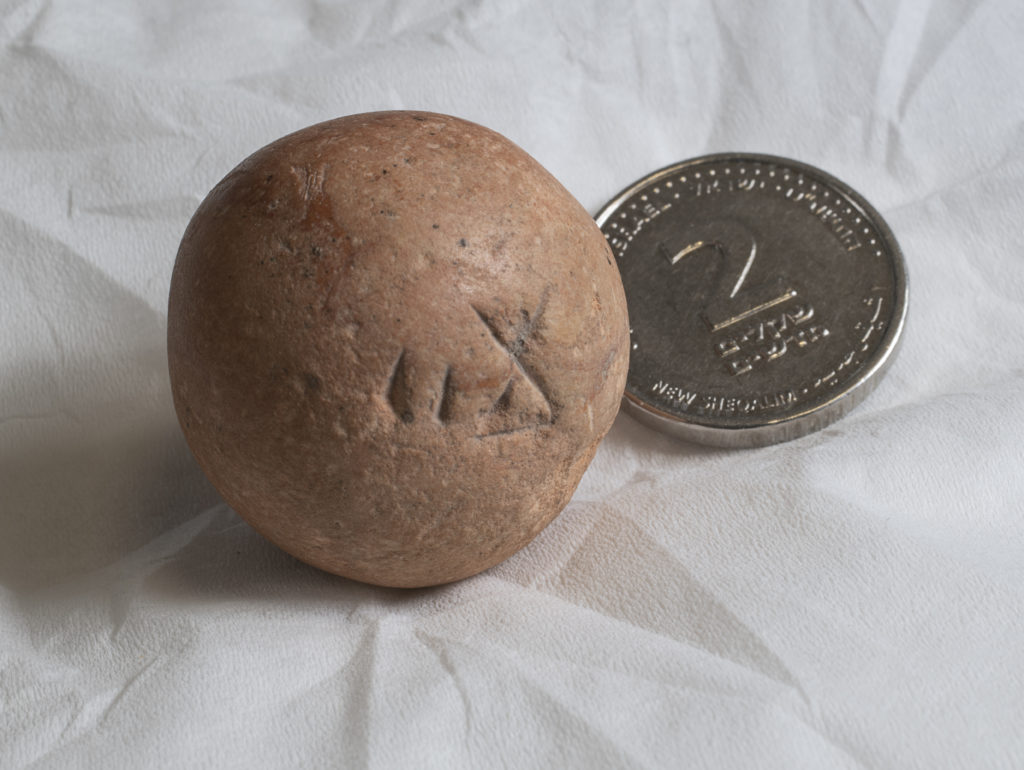
A stone dating to the First Temple period more than 2,500 years ago and is thought to have been used to accurately weigh the Biblical “temple tax” was recently discovered in Jerusalem. The find may be small in size, but its impact is much bigger. “Now, when coming to the Western Wall is so restricted due to the coronavirus pandemic, this finding strengthens the eternal connection between the Jewish nation, Jerusalem, and the Western Wall while offering us all encouragement,” Mordechai (Suli) Eliav, director of the Western Wall Heritage Foundation, was quoted as saying in an Israel Antiquities Authority (IAA) press release on the find.
Marks on the dome-shaped limestone weight indicate it weighs “two shekels”—and measuring the stone found it weighs the exact amount expected based on previous shekel weight discoveries, a total of 23 grams.
“The accuracy of the weight attests to advanced technological skills as well as to the weight given to precise trade and commerce in ancient Jerusalem. Coins were not yet in use during this period, therefore accuracy of the weights played a significant role in business, “Dr. Barak Monnickendam-Givon and Tehillah Lieberman, directors of the excavation on behalf of the IAA, said in a joint statement in the press release.
The weight could have had multiple uses, ranging from trade to worship. Monnickendam-Givon and Tehillah Lieberman said that “one of the uses of the shekel weight system during the First Temple period was to collect an annual tax of half a shekel dedicated to the sacrifices and upkeep of the Temple…
“Year-round and especially during the times of pilgrimage, the area at the foot of the Temple Mount was sure to be busy. Locals and pilgrims would have traded for sacrifices and offerings as well as for food, souvenirs and other commodities. A weight such as the one discovered would have been used to measure accurate amounts of products at the market.”
The use of a tax for religious service was outlined in Exodus chapter 30, and it is likely that a similar levy eventually dubbed the “Temple Tax” was the one paid by Jesus in Matthew chapter 24.
The two shekel weight was discovered during sifting of earthen fills in the area beneath Wilson’s Arch near the Western Wall in the temple mount area. It is part of the broader City of David sifting project.
In addition to the significant location where the ancient weight was found, the timing was noteworthy too—during the Jewish month of Tishrei, the season of Rosh HaShannah and Yom Kippur.
Said Eliav in the press release, “How exciting, in the month of Tishrei, whose symbol is the scales of justice, to find a souvenir from the First Temple period.”
(By Joshua Spurlock, www.themideastupdate.com, October 13, 2020)
